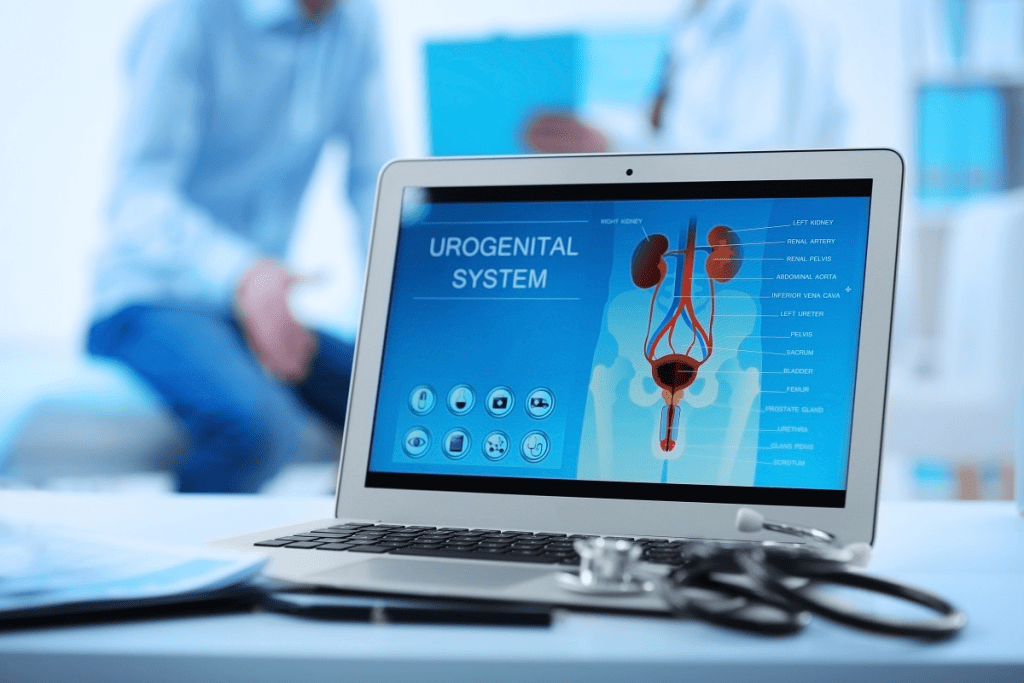Last Updated on October 31, 2025 by

When you’re thinking about a urology procedure, you might wonder: how long will it take? The time it takes can change a lot. It depends on the procedure type, where you have it done, and your personal needs. How long does a standard urologist procedure take? Get the ultimate time estimates for common appointments and surgeries to prepare for your visit.
A study in Urology Times showed that some stone removal surgeries take about 45 minutes on average. But, times can vary a lot. It’s key to know what affects these times so you can get ready for your treatment.
The time it takes for urological procedures varies. This depends on the type of procedure and the patient’s health. Urology deals with the urinary and reproductive systems in both men and women. It includes many different surgeries.
Knowing what affects procedure time helps patients prepare better. It also helps them know what to expect.
Urological procedures can last anywhere from a few minutes to several hours. The time needed depends on the surgery’s complexity, the patient’s health, and the urologist’s techniques.
For example, a simple cystoscopy can take 15-30 minutes. But, a complex surgery like a robotic-assisted prostatectomy can take hours.

Several things can change how long a urological procedure lasts. These include:
Understanding these factors helps patients have a better idea of how long their procedure will take.
Understanding urological procedures and their times is key. Urologists deal with many issues in the urinary and reproductive systems. Here, we cover the five most common procedures and how long they take. This helps patients know what to expect.
Cystoscopy lets urologists see inside the bladder and urethra. They use a cystoscope through the uret hra. It’s used for diagnosing and treating issues like bladder stones and tumors. For more info, visit this resource.

Stone removal, like ureteroscopy and percutaneous nephrolithotomy, treats kidney stones. These procedures can take from 25 minutes to 85 minutes. The time depends on the stone’s size and location.
A prostate biopsy takes tissue samples for cancer diagnosis. It usually takes 20 to 45 minutes. It’s done under local anesthesia, and most patients can go back to normal activities soon after.
Vasectomy is a male sterilization method. It involves cutting or blocking the vas deferens. It’s a quick procedure, taking 20 to 30 minutes.
Knowing about these procedures can ease anxiety. It prepares patients for their treatment. Always talk to a prostate doctor or urologist for specific advice and care.
When you have a urological procedure, your urologist looks at several important things. They want to give you a good idea of how long it will take. Knowing this can make you feel less anxious and help you get ready.
Your medical history is very important. It helps us figure out how long your procedure will take. We look at things like:
Knowing your medical history helps us plan better. It helps us prepare for any challenges that might come up.
The type of procedure you’re having is also a big factor. We check things like:
For example, cystoscopy is usually quicker than more complex surgeries. We also think about our urologists’ skills and experience. This can affect how well and safely the procedure is done.
“The more complex the procedure, the more time we need to allocate for it. Our goal is to ensure that we have enough time to perform the procedure safely and effectively.” – Urology Specialist
The place where your procedure is done can also change its length. We look at things like:
For example, academic centers might need more time. This is because procedures there might be done with the help of trainees under experienced urologists.
By thinking about these things, we can give you a better idea of how long your procedure will take. This helps you feel more prepared for your urological care.
The field of urology is moving towards less invasive procedures. These changes offer many benefits to patients. With new medical technology, these methods are becoming more popular. They help cut down on surgery time and speed up recovery.
A urologist definition now includes treating urinary issues and using new techniques. This improves patient results.
Rezş«m therapy is a new way to treat Benign Prostatic Hyperplasia (BPH). It uses water vapor energy to remove prostate tissue. This treatment is done in one session, lasting 5-15 minutes per lobe.
Patients can usually go back to normal activities in a few days. Studies show it works well over five years, making it a good choice for BPH symptoms.
Laser treatments for kidney stones are a big step forward in urology. They use a laser to break stones into small pieces. These pieces can then be easily passed out of the body.
The laser’s precision lowers the risk of problems and speeds up recovery. Patients often feel less pain and can get back to their routine sooner.
Robotic-assisted surgeries bring more precision and flexibility to urology. They use a robotic system for a clear, 3D view of the area. This helps surgeons do detailed work with better accuracy.
These procedures can mean less blood loss, less pain, and shorter hospital stays. They are changing urology for the better.
In conclusion, procedures like Rezş«m therapy, laser treatments for kidney stones, and robotic surgeries are changing urology. Knowing what is a urologist and their role in using these new methods helps patients make better choices. As technology advances, these benefits will grow.
Knowing what to expect on the day of your urological procedure can make you feel less anxious. It helps you prepare better. We’re here to answer your questions and guide you through it.
Before your procedure, you’ll spend 1 to 2 hours getting ready. Our medical team will make sure you’re all set. This includes:
Our team will also explain the procedure in detail. They’ll answer your questions and give you instructions.
The length of the procedure depends on the type and complexity. Our skilled urologists will take great care of you. They’ll make sure you’re comfortable and safe.
Our team will be with you every step of the way. They’ll explain what’s happening and what you’ll feel.
After the procedure, you’ll go to a recovery area. Our team will watch over you closely. The recovery time can be anywhere from 30 minutes to several hours.
You might feel some discomfort, but we’ll help manage it with pain relief. Once you’re comfortable, we’ll give you instructions on how to care for yourself after the procedure. This includes any follow-up appointments and medication.
By knowing what to expect, you can feel more confident and prepared. If you have any questions or concerns, please don’t hesitate to reach out to our team.
Understanding the time needed for a urological procedure is key for patient readiness. We’ve looked at different urology procedures, their usual times, and what affects these. Procedures like cystoscopies and vasectomies can take different amounts of time, depending on the patient and the procedure’s complexity.
A urologist looks at many things to guess how long a procedure will take. This includes the patient’s medical history and what the procedure needs. For example, some treatments like Rezş«m therapy for BPH or laser treatments for kidney stones are quicker and have faster recovery times.
We help you get ready for your urology procedure on the day. This includes what to do before, during, and after. Knowing these steps helps patients prepare better for their treatment. It’s important to talk to a skilled urologist or specialist for personalized advice and care.
A urologist is a doctor who deals with the urinary tract and male reproductive system. They treat issues like kidney stones, prostate problems, and bladder issues.
The time for a urology procedure varies. It depends on the procedure type, its complexity, and the patient’s health. Procedures can last from 15 minutes to several hours.
Several things can affect procedure time. These include the procedure’s complexity, the patient’s health, and the techniques used, like robotic-assisted surgery.
Common procedures include cystoscopy (15-30 minutes), stone removal (25-85 minutes), prostate biopsies (20-45 minutes), and vasectomy (20-30 minutes).
Minimally invasive procedures, like Rezş«m therapy and laser treatments, are shorter and have faster recovery. They are designed to reduce procedure time and recovery period.
On procedure day, you’ll prepare with registration, gowning, and anesthesia. Our experienced urologists will perform the procedure. Then, you’ll recover in a monitored area until discharge.
Recovery time varies by procedure and health. Some need only a short recovery, while others may require a longer stay or home recovery.
Urology is the study and treatment of urinary tract and male reproductive system disorders. We treat conditions like urinary infections, kidney stones, and male infertility.
A urologist examines ejaculation for volume, consistency, and abnormalities. This helps diagnose issues like infertility, infections, or other conditions.
Rezş«m therapy is a treatment for BPH that uses water vapor energy to shrink the prostate. It’s used to ease symptoms of an enlarged prostate and is done on an outpatient basis.
Subscribe to our e-newsletter to stay informed about the latest innovations in the world of health and exclusive offers!